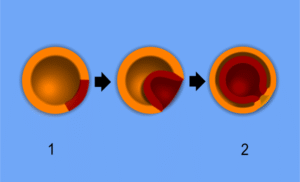Sometimes patients ask why they should save a tooth with a root canal and crown when they can just place an implant. A recent survey by Azarpazhooh et. al. demonstrated a declining pattern of preference for root canal therapy (RCT) in favor of implant supported crowns (ISC) among general dentists, periodontists, prosthodontists and oral surgeons as opposed to endodontists. This declining pattern showed a significantly higher preference for ISC over RCT retreatment.

All human tissues form from one of these three embryonic tissue layers (endoderm, mesoderm, ectoderm).
The tooth is formed from ectodermal tissue and it’s close developmental association with the mesenchymal (mesodermal) tissue.
So as the tooth develops through the bud, cap, bell stages, the enamel organ will form the enamel, the dental papilla will form the dentin and pulp tissue and the dental sac will form all the supporting structures. These supporting structures (periodontium) include cementum, periodontal ligament and alveolar bone. The alveolar bone, including the lamina dura are derived from osteoblasts formed from ectomesenchymal cells.
So the tooth, and its supporting structures are derived from ectodermal tissue and ectomesenchymal tissue. In other words, the periodontium BELONGS to the tooth.
So why does this matter? It matters because when a tooth is extracted, the periodontium is lost. The periodontium is what makes a tooth look, function and feel like a tooth.
The maxillary or mandibular bone is derived from mesodermal tissue. When the dental implant is placed into the jaw bone, it is placed into bone derived from the mesodermal tissue. That bone has different quality and function from the bone associated with the periodontium.
That is why the dental implant does not feel, look or function “just like a tooth”. They are not the same. This important point should not be forgotten.

